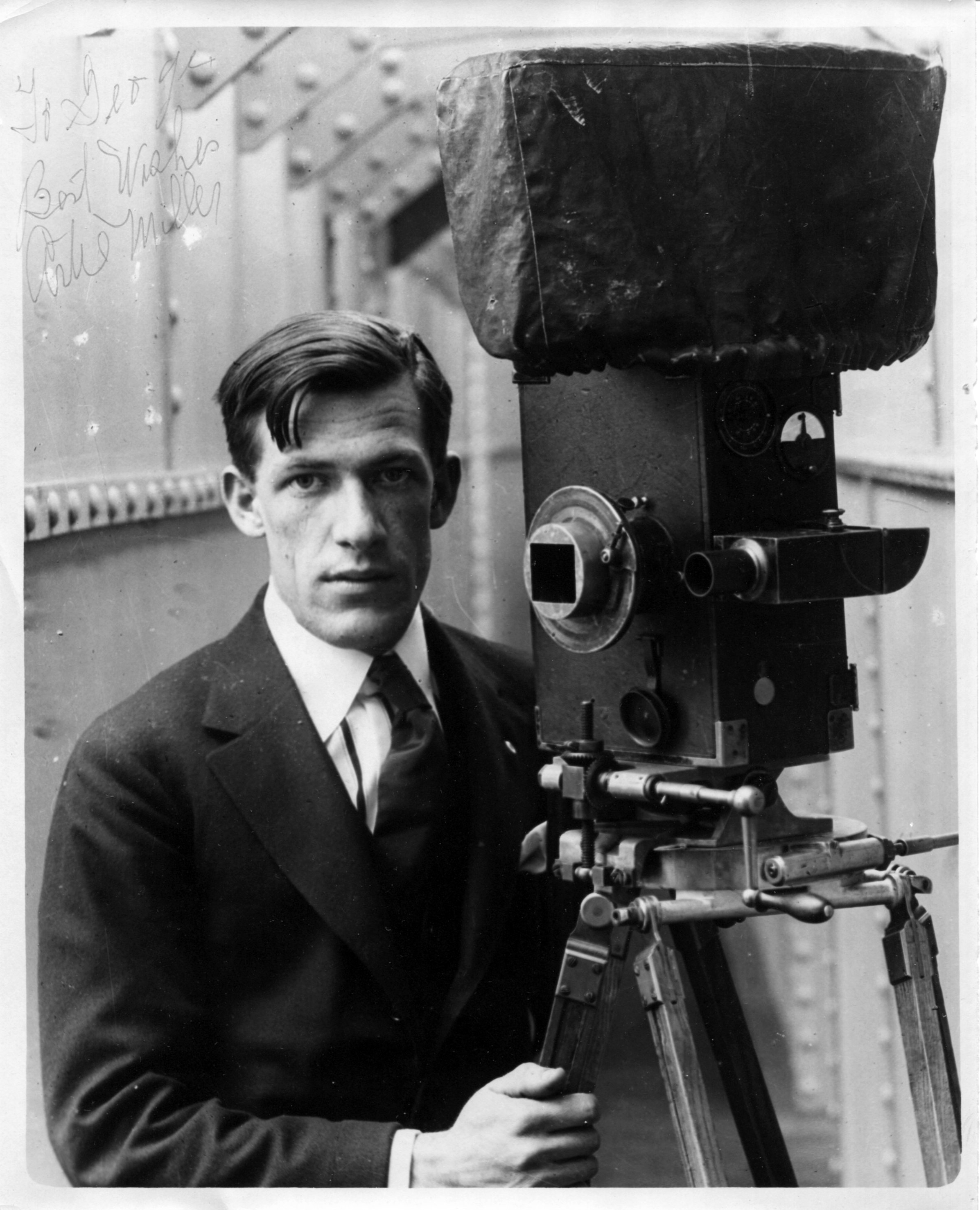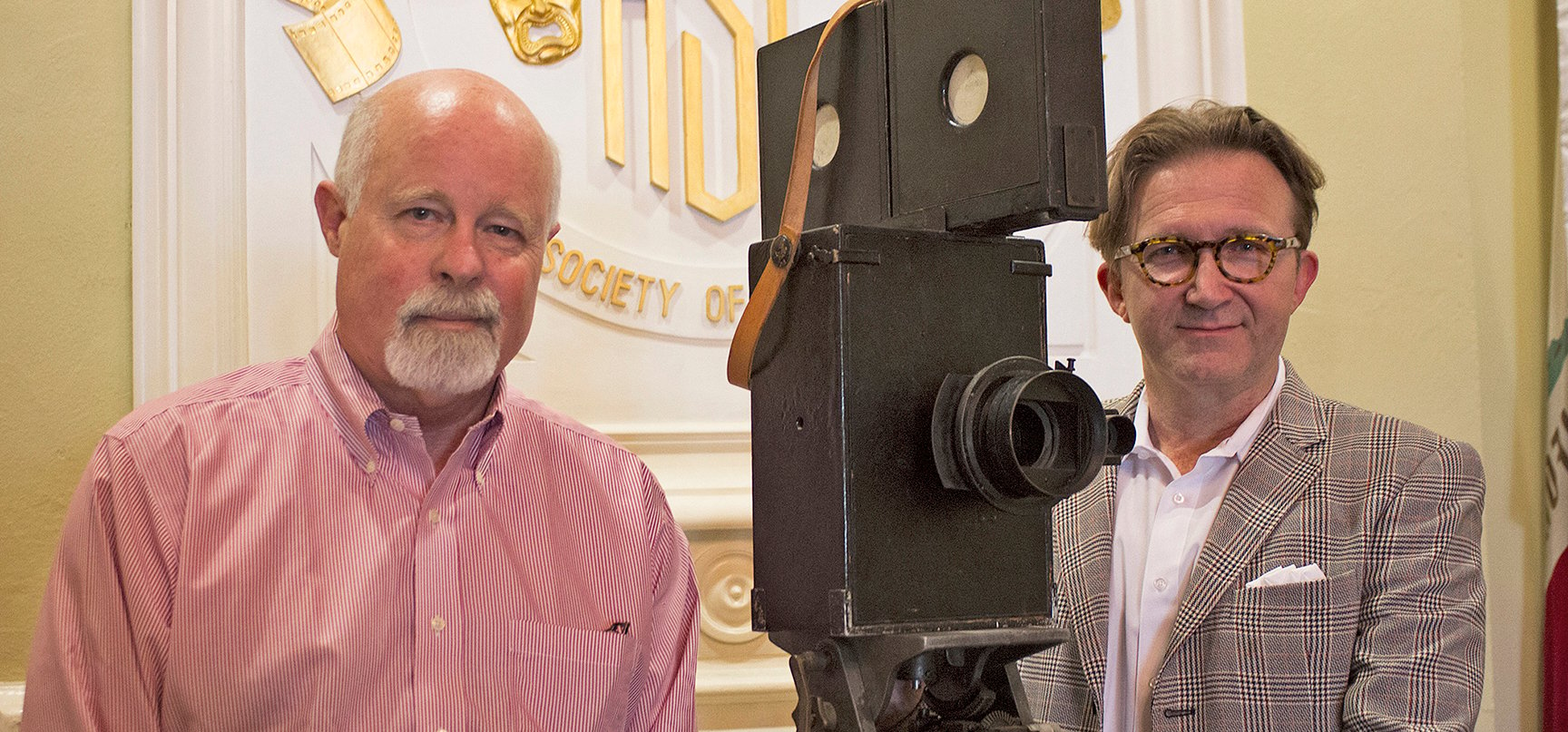
Arthur C. Miller, ASC’s Pathé Camera Donated to ASC
In a twist of fate, the century-old Pathé Studio camera owed by an ASC great is returned to the ASC Clubhouse — its last stop on a remarkable journey.
It’s a red-letter day when an email such as this arrives at the ASC Clubhouse:
From: Jim Mitchell
Sent: Wednesday, May 03, 2017 12:01 PM
To: [email protected]
Subject: 1912 Pathé Studio Model Motion Picture Camera
I own a movie camera that I would very much like to donate the ASC. It’s a 1912 Pathé 35mm movie camera with the factory brass label, original exterior/interior parts and with a tripod.
The camera was owned from around 1914 to 1970 by the late Arthur C. Miller, ASC, who used it to photograph the 1914 serial The Perils Of Pauline.
My late father, George J. Mitchell, Jr., was an associate member of ASC from the 1960s until his death in 1994. He became close friends with Mr. Miller, helping him edit several editions the American Cinematographer Manual and making a film that was completed shortly before Mr. Miller’s death in 1970 about the movie cameras then in the ASC Museum. I was in high school then and helped make the movie. I got to know Mr. Miller and spent many hours at the ASC Clubhouse with him and my father.
The Pathé camera was a gift to my father from Mr. Miller’s estate in 1970 [after he passed away] and has been displayed in his office at my parent’s home since then. The camera became mine after my mother’s recent death.
I can’t think of a better place for the camera than the ASC and its museum, as the ASC is an organization Mr. Miller and my father were dedicated to.
One of your current members, Wayne Keenan, ASC, got his first job as an assistant cameraman/camera operator with my father’s commercial film company. He was friends with my father who let my mother know about the television episode where he got his first credit as an ASC member so she could watch.
Please forward this to the museum curator for consideration.
Thanks,
Jim Mitchell
Needless to say, arrangements were soon made by Steve Gainer, ASC — the curator of the ASC Museum — to accept Miller’s camera (serial number 958), which was personally delivered to the Clubhouse by Mr. Mitchell himself on June 3 (pictured above), along with other items including photos of Miller at work with the camera.

Based on Lumière brothers' patents obtained in 1902 and constructed mainly of wood and leather, the Pathé Studio camera was rendered largely obsolete in 1911 by the introduction of the all-metal Bell & Howell 2709. The Pathé was sometimes referred to as the “cracker box” due to its relatively flimsy construction.
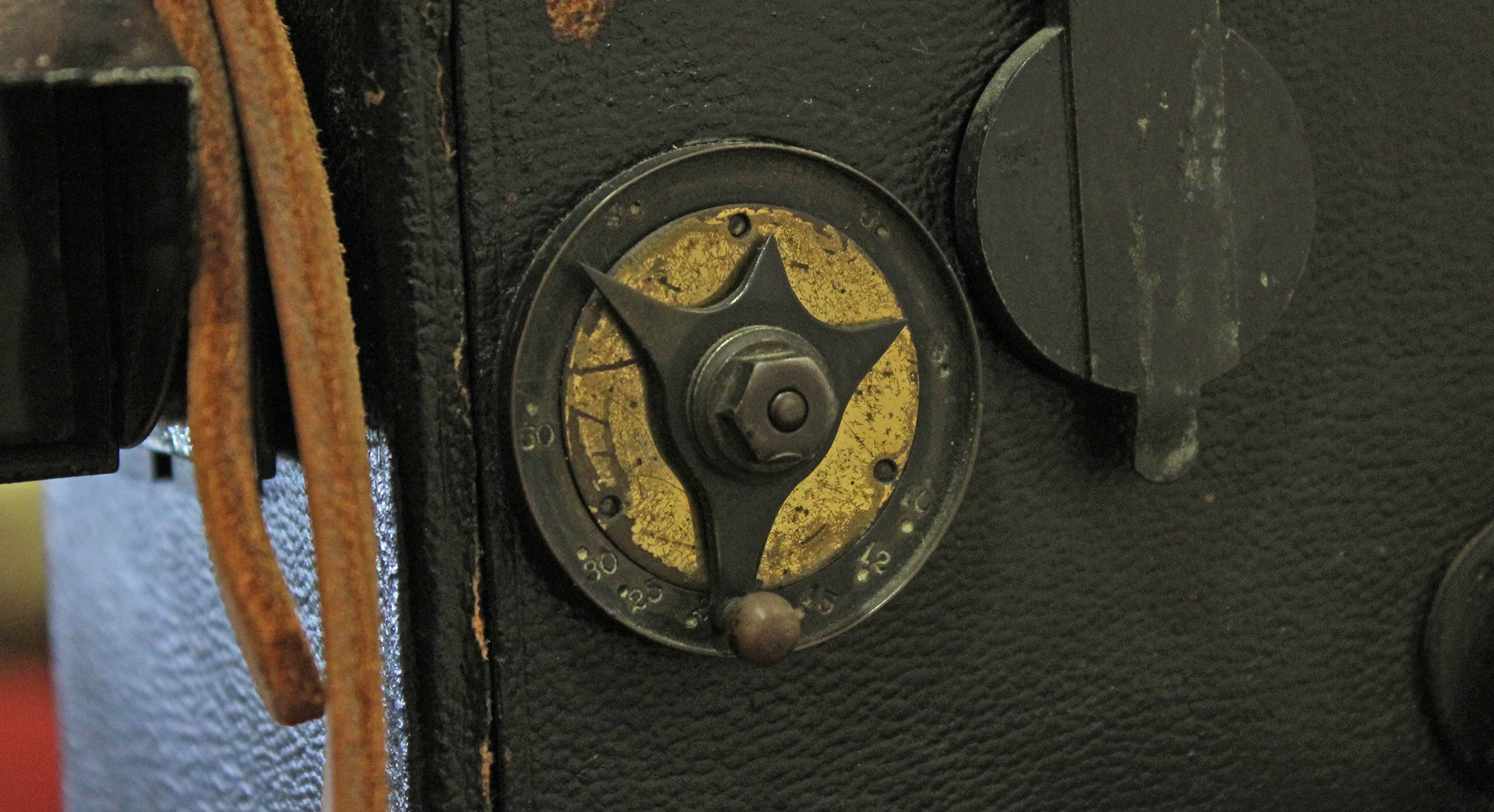
At one time the most popular production camera in the world, Miller’s hand-cranked Pathé — now more than a century old — features two 400’ magazines. It was designed for 16 frames-per-second shooting but could be used in single-frame mode for visual effects work. The lens was focused using a lever on the side of the camera featuring a measured scale. The rotary shutter could be adjusted to create various in-camera effects, including fades and dissolves.
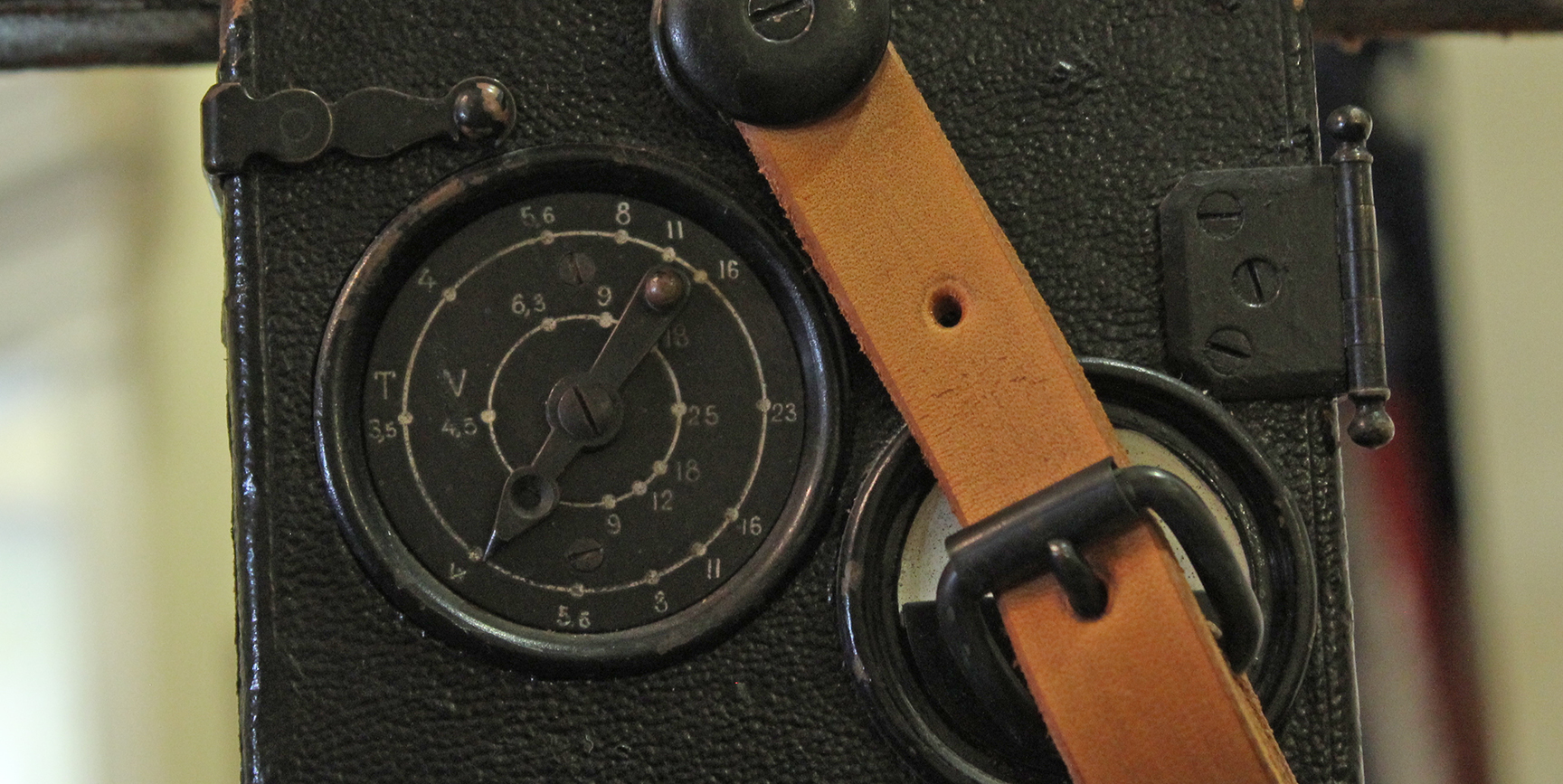
The earliest photo we have of Miller with this camera is dated 1912, when he was just 17 years old, working as a newsreel and studio cameraman for Pathé Frères in New York.
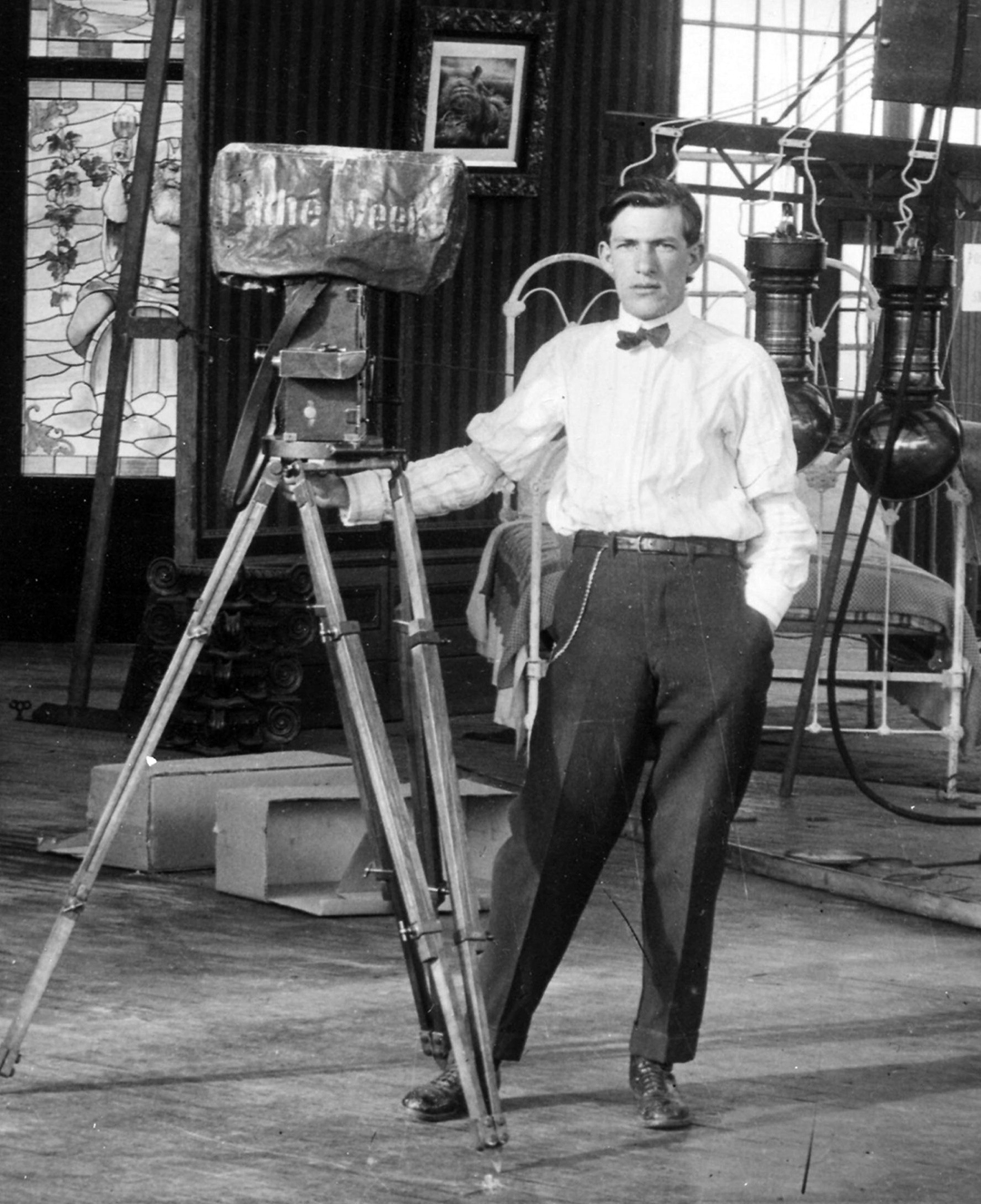
Perhaps the most famous production Miller shot with his Pathé Studio was The Perils of Pauline (1914), an ambitious 20-part serial starring actress Pearl White.

Before he retired for health reasons in 1951, Miller’s exceptional career would include such films as White Fang, Stowaway, Wee Willie Winkie, Rebecca of Sunnybrook Farm, Young Mr. Lincoln, The Mark of Zorro, The Ox-Bow Incident, Lifeboat, Gentleman’s Agreement and The Prowler.

Miller earned Academy Award nominations for his camerawork in The Rains Came, The Blue Bird, This Above All and The Keys of the Kingdom and won the Oscar for How Green Was My Valley, The Song of Bernadette and Anna and the King of Siam.
After becoming a member of the ASC, Miller — who was also a Society president from 1954 to ’56 — founded the ASC Museum, making the addition of his camera to its permanent collection truly special.
The ASC thanks Jim Mitchell for his generosity.
